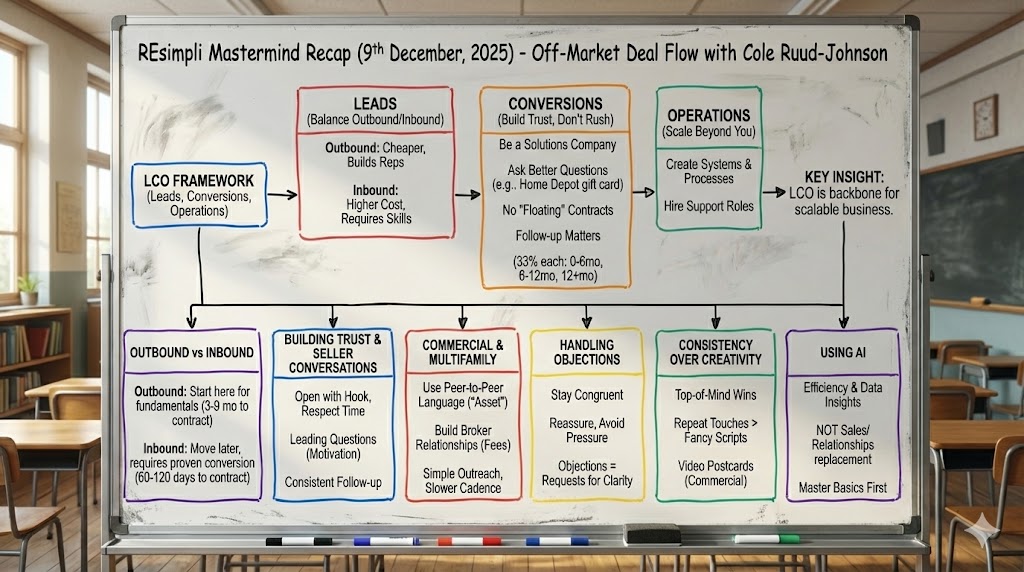Buy and Hold: Mastering This Real Estate Investing Strategy
A Guide to Buy and Hold Real Estate Property Investing
Investing in real estate has long been considered one of the most popular options to build long-term wealth.
However, choosing the right investment strategy can make all the difference between success and failure.
One such strategy that has proven to be effective over time is the buy-and-hold real estate strategy.
In this article, we will explore the fundamentals of the buy-and-hold strategy, its benefits, and how to implement it to maximize your returns.
What is a Buy and Hold Property Investing?
Buy and hold real estate refers to a long-term investment strategy where an investor buys an investment property and holds it for an extended time.
Rather than risking depreciation with short-term rehab, buy-and-hold investors purchase real estate to generate continuous cash flow in a stable environment.
“Investors can benefit from rental income and asset appreciation through multifamily properties,”said Christopher Dixon, a managing partner at Oxford Advisory Group, in a press release.
This article is a comprehensive guide to help you take on buy-and-hold property investing, from how to find the right property to becoming a landlord.
Before scouting potential properties, it’s crucial to understand how buy-and-hold investing works.
When chosen carefully, buy and hold property values increase over time and are less sensitive to market fluctuations.
The steady appreciation combined with rental income can increase your cash flow and eventual return on investment.
While this article focuses on residential real estate, it’s worth noting that you can apply many of these steps to commercial properties.
The main difference in a commercial buy-and-hold deal is the need for greater upfront capital, increased vacancy windows, and more expensive upkeep on average.
Benefits of Buy-and-Hold Real Estate Strategy
Steady Cash Flow
One of the most significant advantages of buy-and-hold real estate investing is the steady cash flow it provides.
By owning a property, you can generate a reliable income stream through rental payments, which can help cover expenses and provide a steady income stream for years to come.
Appreciation of Property Value Over Time
Another benefit of buy-and-hold real estate investing is the potential for appreciation.
One of the best advantages of this strategy is the ability to sell the property when the demand is high but supply is limited.
An investor can study the drastic shift in the market and make the most of his findings.
Tax Benefits
Real estate investors can also take advantage of several tax benefits, such as depreciation, deductions for property taxes, and mortgage interest payments, which can significantly reduce their tax burden.
Ability to Leverage Other People’s Money
Another advantage of this strategy is your ability to leverage other people’s money, which could be via mortgages or more to acquire more property.
Risks of Buy-and-Hold Property Investing
While buy-and-hold investing can be a sound strategy for building long-term wealth, there are risks to consider. One of the most significant risks is the potential for vacancy.
If a property sits vacant for an extended period, it can eat into profits and increase expenses.
Additionally, unexpected repairs or maintenance can be costly, and investors should have a contingency plan for such scenarios.
Another risk to consider is market fluctuations. Real estate markets can be volatile, and property values can rise and fall unexpectedly.
It’s important to have a long-term perspective and be prepared for potential downturns in the market.
How to Implement Buy and Hold Real Estate Investing In 5 Steps

The proper buy-and-hold real estate business strategy can guide you through every step of the investment process. Here are 5 steps to keep in mind:
Find Good Real Estate Property
Your property should be attractive to renters in the short term and future buyers in the long term – but don’t let that scare you.
A good buy-and-hold property should:
- Maximize your bottom line: Savvy real estate investors negotiate the purchase price, knowing that the number dictates your housing expenses and monthly cash flow.
- Be located in a compelling neighborhood: Find areas that are growing by looking at moving data.
Ideally, your buy-and-hold property will be in a neighborhood that has seen population growth – that means it’s likely to have interested prospects looking to move in. - Focus on the family: Families always need housing. That’s why single-family homes in up-and-coming neighborhoods are usually safe long-term investments!
Finding a property with three to four bedrooms in a secure area will attract tenants over time.
Pro Tip: If the process starts to feel overwhelming, contact a local real estate agent who works with investors and rental properties.
They’ll be able to help you hone in on real estate that fits your needs!
Finance Your Property Purchase
Building your investment portfolio requires capital, so let’s talk about how to make yourself an ideal lender first.
If you have debt, focus on paying off high-interest credit first.
Then check your credit score; most lenders require a credit score in the high 600s or better for a 10% down payment.
To boost your credit score, consider asking for higher credit limits and ensuring all your bills are paid on time.
Once your credit score is healthy, you have more financing options available.
You could tap into your primary residence’s equity with a home equity loan, Home Equity Line of Credit (HELOC), or a cash-out refinance.
Alternatively, you could pursue the following:
- A traditional mortgage: Good for those with good credit, a sizable down payment (typically 10-20% of the home price), and a proven history of the investment portfolio.
- Freddie Mac’s investment property mortgage program: Ideal for investors who need customized home financing options but require meeting strict criteria such as a 15% down payment for 1-unit properties and a 24% down payment for 2-4-unit properties along with six months’ reserves for each property.
- A portfolio loan: Similar to a traditional mortgage, your bank holds the loan in its portfolio for the life of the loan.
Your interest rate will be 2-4% higher than current market rates, and you’ll owe more at closing, but you’ll enjoy more forgiving credit, down payment, and debt-to-income requirements. - A 1031 tax exchange: Rocket Mortgage defines this type of exchange as “a real estate investing tool that allows you to swap out an investment property for another and defer gains, losses, or capital gains tax that you’d otherwise have to pay at the time of sale.”
There are several requirements you must meet, including that the property you’re selling and the property you’re buying must be “like-kind.”
You’ll also need to work with a qualified intermediary who will hold your funds in escrow until the exchange is complete, following a strict timeline.
Once you’ve purchased your property, it’s time to consider how to boost the property’s market value.
Increase the Home Value for Your Buy-and-Hold Property
Don’t break out the sledgehammer just yet!
Unless you opted for a property that needs more than a facelift, focus your efforts on making updates that make the space more appealing to live in.
At a minimum, consider updating the following:
- The flooring
- The paint
- Kitchen appliances
- Bathroom fixtures
- The exterior
These tweaks can help you get more rental income without having to completely flip property. After the dust settles, we recommend saving up at least three times your expected monthly rental income as an emergency fund, just in case.
From there, you’re ready to become a landlord.
Become a Landlord
Indeed, you don’t have to become a landlord to succeed with this real estate investing strategy, but getting into property management will mean keeping more of your earnings.
If you elect to hire someone else for the job, expect their management fees to be about 10% of the annual rent at a minimum.
That means there’s less passive income flowing into your bank account; the choice is yours.
If you decide to become a landlord, you need to learn about your local landlord-tenant and Fair Housing laws. Once you understand your legal obligations, you can start marketing your property.
We recommend using TurboTenant for all of your landlord’s needs. Their all-in-one software lets landlords market unlimited properties and finds top-quality tenants for $0.
You can even collect rent online, manage maintenance requests, and communicate with your renters directly through their platform – not to mention pay a nominal fee to access their Forms pack, which has all the supporting documents modern property managers need.
Additionally, the TurboTenant team publishes new articles weekly and hosts webinars monthly to help you stay up-to-date with everything in the rental industry.
Landlording has never been so accessible!
Prepare for Everything
Okay, so you can’t prepare for everything, but that doesn’t mean you shouldn’t try to be ready for the unexpected. Take maintenance costs, for example.
It’s not unrealistic to have everything going well until all the major appliances break at once, and you have to act quickly.
As a safeguard, plan to follow either the 50% rule or the 1% rule:
- 50% rule: Save half of your rental income each month for repairs, maintenance, property taxes, insurance, and other property management costs.
- 1% rule: Maintenance usually costs about 1% of the property value annually, so be sure to save that amount and add to it as needed to keep your funds flowing.
It also helps to build out a roster of skilled professionals who can help when problems arise.
If you find a reliable handyman, then you can stress less when your tenant calls late at night saying their basement is flooded.
We recommend finding a trustworthy handyman, electrician, real estate attorney, and house cleaner to build out your team.
The Bottom Line
Buy and hold real estate investments can help you build wealth over time.
By finding a good property in a growing area, your real estate portfolio can flourish without being bogged down by market fluctuations – particularly if you elect to become a landlord and keep more of your rental income instead of wasting money on a property management company.


![Investing with other people’s money [Part 2]](https://resimpli.com/wp-content/themes/REsimpli/images/how-it-work.jpg)